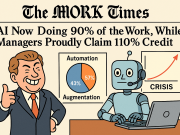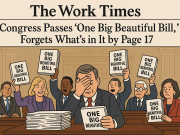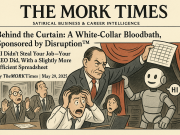Unraveling the $1 Billion Sale: Lessons from Dollar Trees Bold Move
In the complex world of discount retail, where every cent matters, Dollar Tree’s recent $1 billion sale of Family Dollar might seem like a paradox. Yet, beneath the surface lies a narrative woven with strategic foresight, market adaptation, and a response to evolving consumer behaviors. This transaction marks a pivotal moment in the history of discount retail chains and sets a precedent for future market maneuvers.
The Strategic Shift
Once the crown jewel of Dollar Trees portfolio, Family Dollar was acquired for a staggering $9 billion in 2015. Fast forward to now, the decision to divest Family Dollar for just $1 billion may initially appear as a significant loss. However, this strategic move was less about cutting losses and more about refocusing resources on core strengths. Dollar Tree recognized the necessity to sharpen its business model, aiming for long-term sustainability amid increasing competition and changing consumer preferences.
Adapting to Economic Tides
In todays volatile market, where inflationary pressures and supply chain disruptions are the new norm, retailers must be nimble. The discount retail sector, particularly, thrives on volume and efficiency. Dollar Tree’s pivot reflects a broader economic shift where adaptive strategies are essential. By shedding Family Dollar, the company can direct its efforts towards Dollar Tree stores, known for their fixed $1 price point, a model that resonates strongly with budget-conscious shoppers.
The Competitive Landscape
The discount retail market is a battlefield where giants like Walmart and emerging players vie for dominance. Dollar Tree’s strategic trimming of its portfolio is a calculated response to this competitive pressure. By concentrating on a singular brand vision, Dollar Tree is positioning itself to enhance its operational efficiency, streamline supply chains, and reinforce its brand identity. This focus allows it to be more agile and responsive to market demands, ultimately securing a competitive edge.
Impact on the Workforce
Such strategic shifts have profound implications not only for market dynamics but also for the workforce. This divestment is likely to result in changes to employment structures within the organization. While tough decisions lie ahead, there is also the potential for new opportunities as the company realigns its goals and strategies. The workforce must be prepared to adapt, reskill, and embrace new roles as they emerge in a transformed business landscape.
A Lesson in Resilience
Dollar Trees decisive move to sell off Family Dollar for a fraction of its purchase price holds a vital lesson in corporate resilience. When faced with challenges, organizations must not shy away from making bold decisions that, at first glance, may seem drastic. This case exemplifies the importance of strategic vision, adaptability, and the courage to realign when the market demands it.
As Dollar Tree embarks on its renewed path, the discount retail market watches closely. This episode in retail highlights a shift in the industry, one where agility, strategic focus, and an unwavering commitment to consumer needs will define the future leaders of the sector.
In the world of work, this narrative serves as a beacon, reminding corporations and employees alike that the ability to pivot and adapt is not just advantageous, but essential for survival and growth.




























